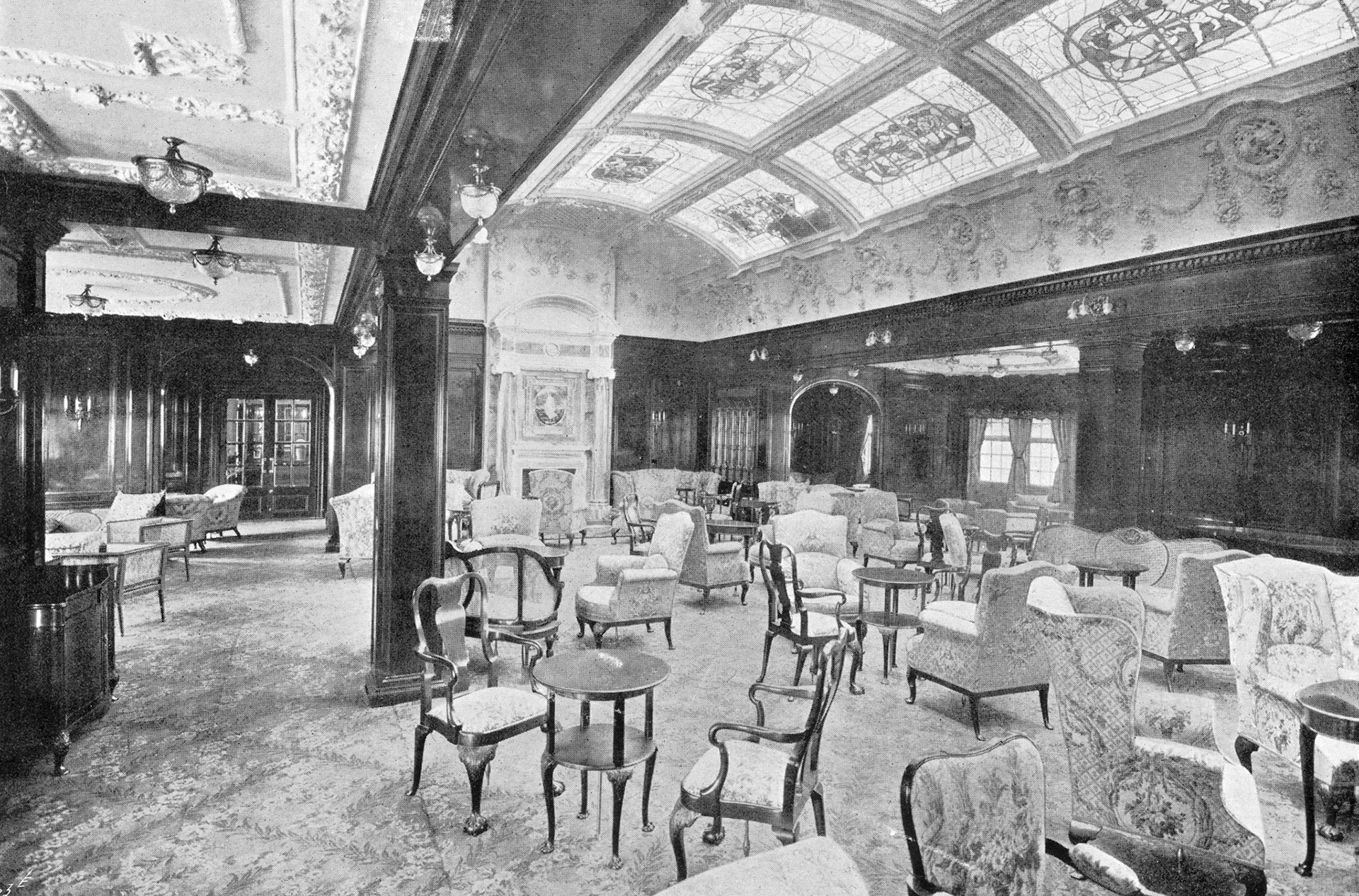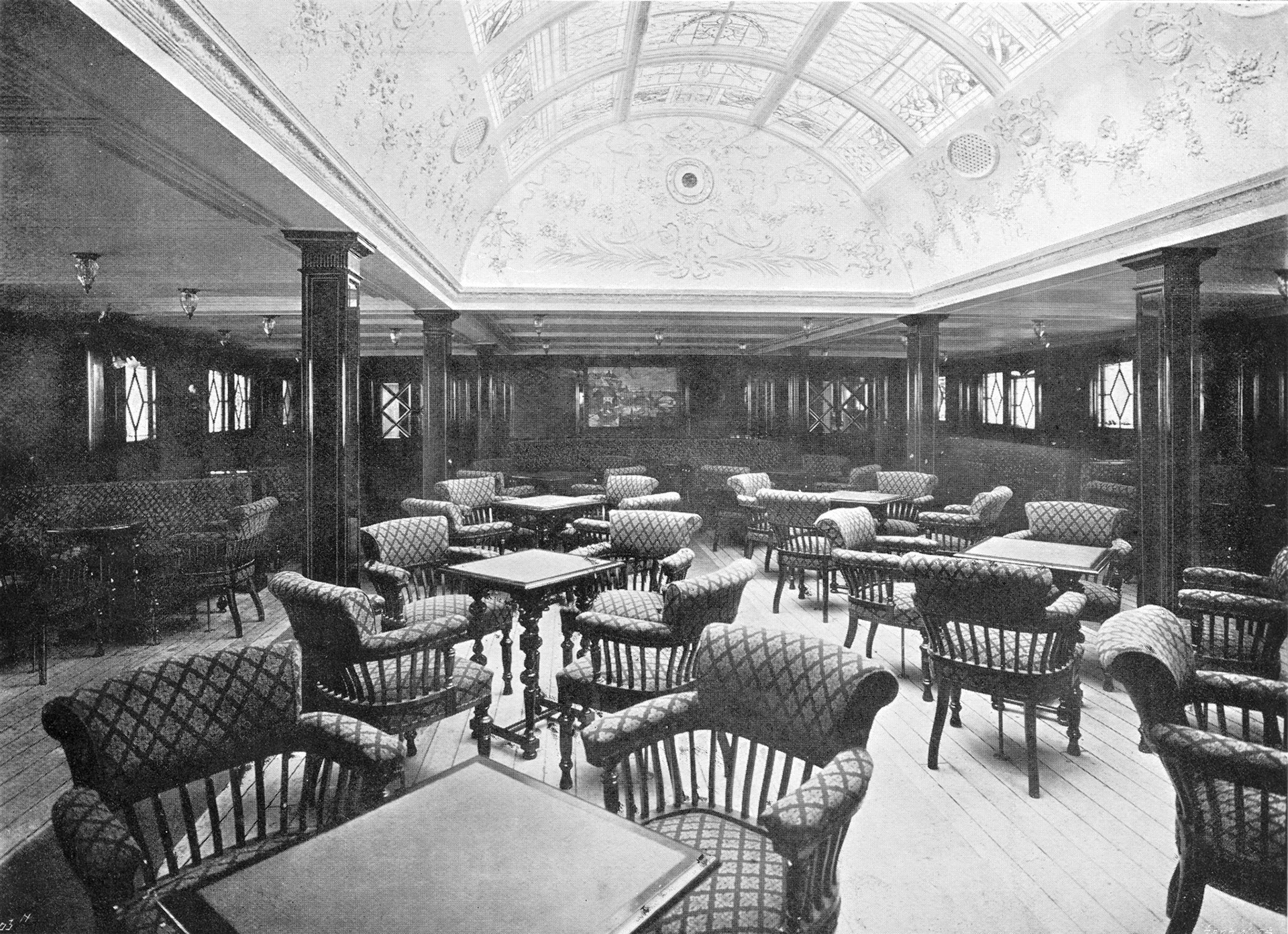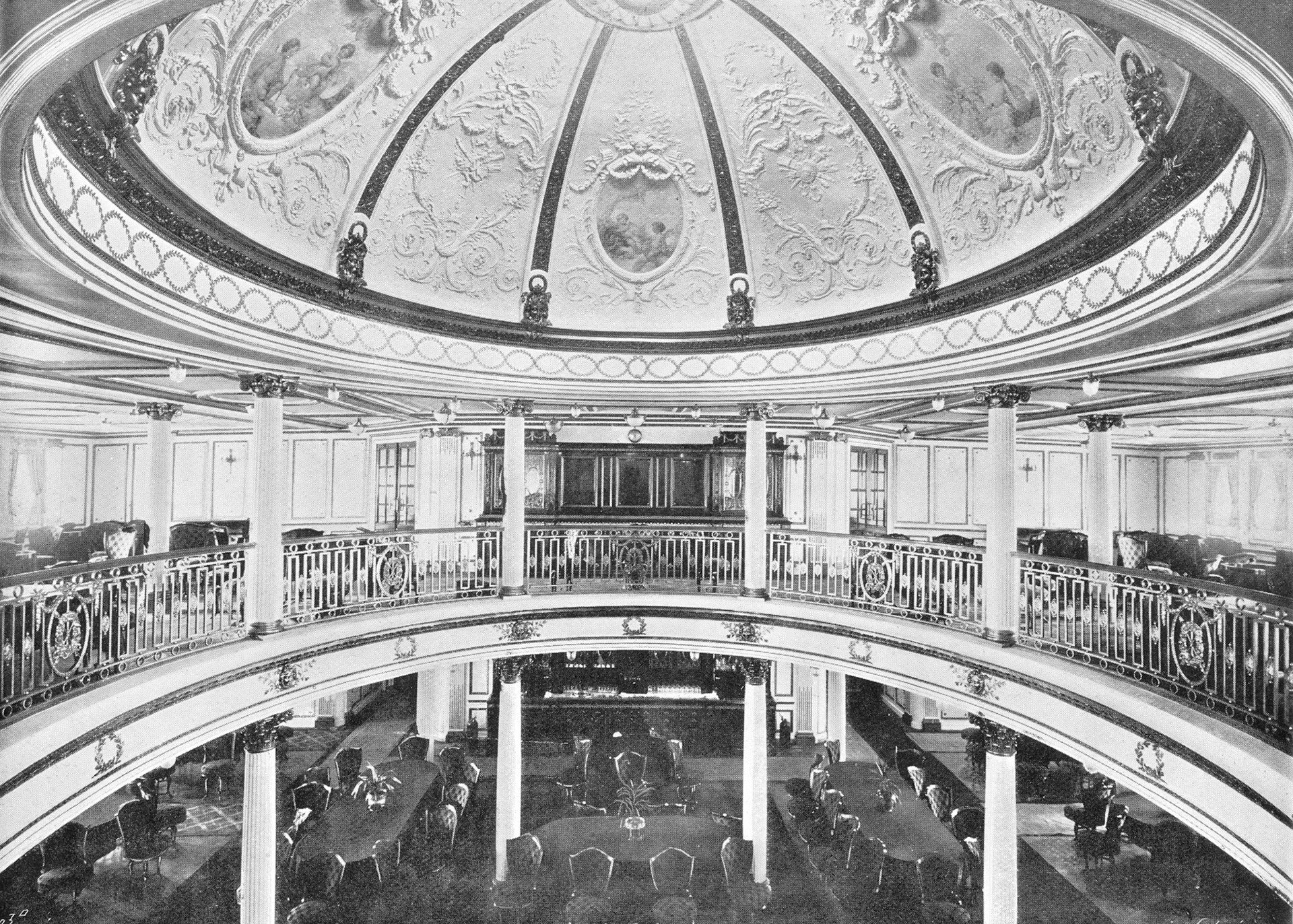Lusitania
The ill fated Lusitania was built for Cunard at John Brown’s shipyard in Clydebank at a cost of £1,651,870, the keel was laid in August 1904 and she was launched on June 7th 1906, a beautiful summers day with crowds coming from far and wide, many of them watching from the south side of the river.
James Miller’s plasterwork interiors gave the ship a bright and airy feel. The First class dining salon was arranged over two decks with a circular well at the centre and a 29ft dome decorated with frescos in the style of Francois Boucher. The walls were finished with white and guilt carved mahogany panels, with corinthian columns where required. The lower floor could seat 323 and the upper 147. The First class writing room and library had walls decorated with carved pilasters and mouldings marking out panels of try and cream silk brocade.The carpet was rose, the writing desks of mahogany and the windows featured stained glass. The First class lounge was decorated in the Georgian style with inlaid mahogany panels surrounding a jade green carpet with a yellow floral pattern. The lounge had a barrel vaulted skylight with stained glass windows representing the days of the year. Each end of the lounge had a 14ft high green marble fireplace.
In a departure for Cunard, a second class lounge was provided, furnished with mahogany tables and chairs on a rose carpet. The second class smoking room was 52ft long with mahogany panelling, white plasterwork ceiling and a dome and one wall featured a mosaic of a river scene in Brittany. The Third class dining saloon was located in the bow of the ship on the saloon deck and was 79ft long and finished in polished pine, as were the other third class public rooms.
The Lusitania was torpedoed and sank May 7th 1915.
Lusitania interior














